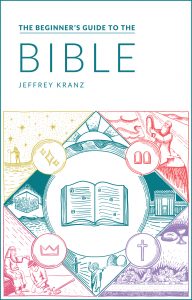Thomas the Apostle—often referred to as “Doubting Thomas”—was one of the twelve main disciples of Jesus Christ. In the Gospel of John, Thomas famously doubted Jesus’ resurrection, telling the other disciples, “Unless I see the nail marks in his hands and put my finger where the nails were, and put my hand into his side, I will not believe” (John 20:25).
Jesus then appeared and offered to let him do just that.
Upon seeing Jesus in the flesh with his own eyes (and possibly touching the wounds), Thomas proclaimed, “My Lord and my God!” (John 20:28). Jesus responded with one of the most powerful and prophetic statements about faith in all of Scripture: “Because you have seen me, you have believed; blessed are those who have not seen and yet have believed” (John 20:29).
Thomas’ moment of skepticism earned him the nickname “Doubting Thomas,” which evolved into a term for anyone who needs proof before they believe something.
Honestly, that’s all you really need to know about the Apostle Thomas. He’s not a major Bible character by any means—he’s only mentioned eight times in the entire New Testament, and four of those times are just lists of the twelve apostles. And while throughout church history people have been happy to fill in the details of his life, few of those details are reliable. (For example, one ancient text even claimed he was Jesus’ twin brother . . . what?!)
But while the Bible tells us little about him, Thomas’ cautious approach to believing in the resurrection laid the foundation for evidence-based faith and for the Protestant teaching of sola fide, or faith alone. And even though he lived 2,000 years ago, Thomas also serves as a foil for Christians today—those who have not seen and yet have believed.
In this guide, we’ll highlight the things we can observe about Thomas from the Bible and what the early church said about him.
Here are the quick facts about Thomas the apostle.

Facts about Thomas the Apostle
Thomas is mentioned a total of eight times between the four gospels and Acts. Most of what we learn about him comes from the Gospel of John—the only book of the New Testament that gives him any specific role. Between that and a few reliable claims from the early church, here’s what we know.
One of the Twelve
The New Testament lists all Twelve apostles four times—Matthew 10:2–4, Mark 3:14–19, Luke 6:13–16, and Acts 1:13–16. While there are some variations in the order the apostles appear and even the names they went by, Thomas is listed in all of them. He’s also clearly one of the Twelve in the Gospel of John, though John never explicitly lists them all.
This means Thomas was one of the people who was closest to Jesus, and that he spent about three years living with him, witnessing his miracles, and hearing his teachings. He saw numerous demonstrations of Jesus’ power—including his power to raise people from the dead—and he heard Jesus predict his resurrection, but he still didn’t believe Jesus was resurrected until he saw for himself.
“Called the Twin”
In three of the times Thomas is mentioned, the Bible notes that he was called didymos, a Greek word meaning “twin,” which was often used as a name. Unless your name is Thomas, it may surprise you to learn that the modern name “Thomas” comes from the Aramaic word tĕʾomâ, which means . . . twin.
Yup. The Apostle Thomas doesn’t even have an actual name in the Bible. Everyone literally just refers to him as “the twin.” Interestingly, tĕʾomâ is just a description in Aramaic—it doesn’t appear to be used as a name—but didymos was used as both a description and a name.
So while your Bible says some version of “Thomas, called the Twin” in John 11:16, John 20:24, and John 21:2, a literal translation would say “the twin, called the Twin.”
Poor guy.
We can still call him Thomas. Some early traditions called him Judas Thomas, because some Syriac manuscripts claimed his real name was Judas. But that would probably just cause more confusion for us today, since there are already multiple Judases in the Bible, and one of them did a pretty bad thing.
The Bible never mentions who Thomas’ twin is. Interestingly, in the third century, a text called the Acts of Thomas emerged claiming he was Jesus’ twin. And that’s . . . not true.
Missionary
The earliest mention of Thomas’ missionary work comes from Eusebius of Caesarea, who quotes Origen (a scholar who died in the mid-third century) as saying that Thomas was sent to Parthia (which is in modern day Iran).
But according to the more popular church tradition, Thomas travelled to India around 50 AD and evangelized the people there, possibly establishing as many as seven churches. This tradition appears to have begun with the Acts of Thomas, and it remains immensely popular in some churches—especially those claiming to have been established by him.
A skeptic
Thomas is most known for his role in the Gospel of John, which earned him the moniker “Doubting Thomas.” And while the nickname is often used as a critique of his lack of faith, the reality is that he wasn’t the only one who had doubts about Jesus’ resurrection from the dead.
According to the synoptic gospels (Matthew, Mark, and Luke), the other disciples doubted the resurrection, too:
“When they came back from the tomb, they told all these things to the Eleven and to all the others. It was Mary Magdalene, Joanna, Mary the mother of James, and the others with them who told this to the apostles. But they did not believe the women, because their words seemed to them like nonsense.” —Luke 24:9-11
Unfortunately for Thomas, he’s the only one the church labeled a “doubter,” thanks to the account in the Gospel of John. The Anchor Yale Bible Dictionary suggests John focused on Thomas to illustrate the doubt all the disciples shared:
“Thomas has been chosen from among the Twelve to dramatize the disbelief of the group. The refusal of the disciples to believe the testimony of those who had seen the risen Lord is a common feature of the gospel tradition (Matt 28:17; Mark 16:11, 14; Luke 24:36–43); the fourth Evangelist alone has chosen Thomas to represent and symbolize this doubt.”
But even if Thomas was the only apostle who doubted the resurrection, there’s little reason for Christians to wield doubt as some sort of insult. Even though Jesus repeatedly revealed his plans to the disciples, they never understood the cross and resurrection until after the fact. And as Jewish men, they apostles had no reason to believe the Messiah would rise from the dead.
Jesus’ resurrection defied everything the apostles understood and believed about the Messiah—and death—since they were children. It flew in the face of their tradition. And despite everything the apostles saw and heard that proved Jesus was unlike anyone who ever lived, he died just like everyone else.
So it’s no wonder Thomas—and Jesus’ other followers—doubted the resurrection until they saw the evidence for themselves. And Jesus’ willingness to engage Thomas in the midst of his doubts encourages Christians today to bring their doubts to him, too. It’s important to recognize that in Jesus’ response to Thomas, he recognized how much harder it would be for those who had never seen his miracles to believe.
A fisherman?
The Bible doesn’t explicitly say Thomas is a fisherman, but in the Gospel of John, he does go fishing with fishermen. After Jesus appears to the disciples, Peter gets antsy and decides to go fishing, and some of the other disciples tag along:
“Simon Peter, Thomas (also known as Didymus), Nathanael from Cana in Galilee, the sons of Zebedee, and two other disciples were together. ‘I’m going out to fish,’ Simon Peter told them, and they said, ‘We’ll go with you.’ So they went out and got into the boat, but that night they caught nothing.” —John 21:2–3
Nobody said he was a good fisherman.
The passage doesn’t technically call him a fisherman, but Peter, the sons of Zebedee (that’s James and John), and Peter’s brother Andrew—who’s presumably one of the two unnamed disciples here—all were.
Thomas in the Bible
Aside from the four lists of disciples, Thomas is mentioned four more times in the Bible—all of which occur in the Gospel of John. Here are the passages where we actually learn something about him.
The Death of Lazarus (John 11:1–16)
When Jesus learns that his friend Lazarus has died, he tells his disciples that they must return to Judea. They try to talk him out of it, because the last time they were there people were ready to stone Jesus to death. He insists. And then Thomas boldly speaks up:
“Then Thomas (also known as Didymus) said to the rest of the disciples, ‘Let us also go, that we may die with him.’“ —John 11:16
Here Thomas almost takes on a Peter-like quality and, perhaps ironically, appears to have more faith in Jesus than the other apostles. Thomas’ is often quoted with a cynical, Eeyore-type tone, but he may have been one of the more courageous disciples.
Jesus the way to the Father (John 14:1–14)
After predicting his betrayal and Peter’s eventual denial of him, Jesus comforts his disciples by telling them he is going to prepare a place for them, and that they know the way to the place he is going.
Reasonably, Thomas points out:
“Lord, we don’t know where you are going, so how can we know the way?” —John 14:5
This sets up one of Jesus’ more famous quotes, which only appears in the Gospel of John:
“I am the way and the truth and the life. No one comes to the Father except through me. If you really know me, you will know my Father as well. From now on, you do know him and have seen him.” —John 14:6–7
The gospel writers frequently use the disciples’ questions to tee up Jesus’ teachings. Some Christians use this passage to read into Thomas’ character, but that’s probably not the point. Philip has a similarly blunt line after this to set up another one of Jesus’ important monologues.
Jesus appears to Thomas (John 20:24–29)
John is the only one who records Thomas’ special encounter with Jesus, which appears to mirror the encounter Jesus had with the others in John 20:19–23. For some unknown reason, Thomas wasn’t with the disciples when Jesus appeared to them the first time, and Thomas refuses to believe his friends, so Jesus declares a do-over.
Here’s the entire passage:
“Now Thomas (also known as Didymus), one of the Twelve, was not with the disciples when Jesus came. So the other disciples told him, ‘We have seen the Lord!’
But he said to them, ‘Unless I see the nail marks in his hands and put my finger where the nails were, and put my hand into his side, I will not believe.’
A week later his disciples were in the house again, and Thomas was with them. Though the doors were locked, Jesus came and stood among them and said, ‘Peace be with you!’ Then he said to Thomas, ‘Put your finger here; see my hands. Reach out your hand and put it into my side. Stop doubting and believe.’
Thomas said to him, ‘My Lord and my God!’
Then Jesus told him, ‘Because you have seen me, you have believed; blessed are those who have not seen and yet have believed.’” —John 20:24–29
The Bible doesn’t tell us whether or not Thomas physically touches Jesus’ wounds. Interestingly, Catholic tradition holds that Thomas did touch them, which has historically supported the idea of using physical rituals and pilgrimages to bolster faith, while Protestant tradition generally holds that Thomas did not touch them, which has been used to reinforce the idea that faith alone is enough for people to be saved. This theological difference is often represented in Catholic and Protestant art portraying Jesus and Thomas.
Jesus and the miraculous catch of fish (John 21:1–14)
As we’ve already mentioned, after the resurrection, Peter declares that he’s going fishing, and Thomas is listed among the six disciples who comes with him. Thomas doesn’t play any major role in this passage—which mirrors the miraculous catch in the synoptic gospels and primarily serves to set the scene for Jesus to reinstate Peter.
How did the Apostle Thomas die?
The Acts of Thomas says that he was martyred in Mylapore, India, where he was stabbed with spears. Syrian Christian tradition specifies Thomas was martyred in Mylapore on July 3, 72 AD, noting that he was killed with a spear. An early ecclesiastical calendar entry reads:
“3 July, St. Thomas who was pierced with a lance in ‘India’.”
No other tradition exists regarding his death.
Doubting Thomas
Since the Gospel of John makes Thomas the scapegoat for doubt, it’s easy to forget the other apostles doubted the resurrection, too. Christians often treat his skepticism as a weakness, but it’s important to remember: Jesus welcomed Thomas’ skepticism and challenged his doubts with evidence of his resurrection.
Thomas the Apostle is a famous symbol for doubt, but if we’re to learn anything from him, it should be this: our doubts may lead us to a deeper, richer faith. Jesus specifically says, “blessed are those who have not seen and yet have believed” (John 20:29), but he also doesn’t ask all of us to blindly put our faith in him. Instead, we’re invited to investigate the truth of the resurrection, and explore the way, the truth, and the life.





Most enlightening — never knew Thomas wasn’t actually his name. And it makes sense that the other disciples doubted too as they were hiding in a locked room after the crucifixion. Poor Thomas for being viewed as the only doubter.